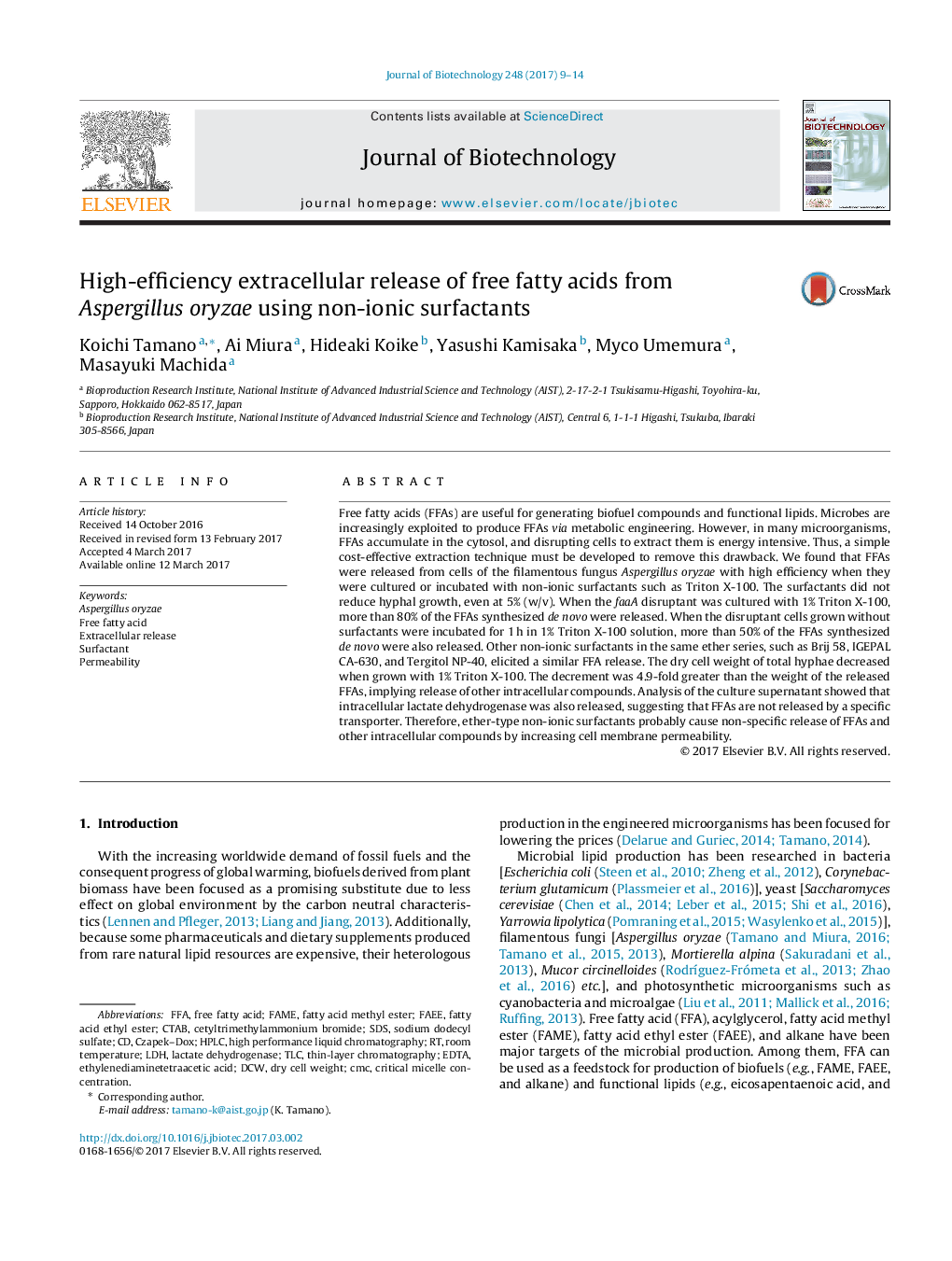| Article ID | Journal | Published Year | Pages | File Type |
|---|---|---|---|---|
| 6452125 | Journal of Biotechnology | 2017 | 6 Pages |
â¢>80% of FFA molecules synthesized de novo were released by 1% Triton X-100.â¢The release was highly specific to FFA without releasing other lipids.â¢Release of FFA occurred both cultivation and incubation of cells with surfactant.
Free fatty acids (FFAs) are useful for generating biofuel compounds and functional lipids. Microbes are increasingly exploited to produce FFAs via metabolic engineering. However, in many microorganisms, FFAs accumulate in the cytosol, and disrupting cells to extract them is energy intensive. Thus, a simple cost-effective extraction technique must be developed to remove this drawback. We found that FFAs were released from cells of the filamentous fungus Aspergillus oryzae with high efficiency when they were cultured or incubated with non-ionic surfactants such as Triton X-100. The surfactants did not reduce hyphal growth, even at 5% (w/v). When the faaA disruptant was cultured with 1% Triton X-100, more than 80% of the FFAs synthesized de novo were released. When the disruptant cells grown without surfactants were incubated for 1Â h in 1% Triton X-100 solution, more than 50% of the FFAs synthesized de novo were also released. Other non-ionic surfactants in the same ether series, such as Brij 58, IGEPAL CA-630, and Tergitol NP-40, elicited a similar FFA release. The dry cell weight of total hyphae decreased when grown with 1% Triton X-100. The decrement was 4.9-fold greater than the weight of the released FFAs, implying release of other intracellular compounds. Analysis of the culture supernatant showed that intracellular lactate dehydrogenase was also released, suggesting that FFAs are not released by a specific transporter. Therefore, ether-type non-ionic surfactants probably cause non-specific release of FFAs and other intracellular compounds by increasing cell membrane permeability.
Graphical abstractDownload high-res image (161KB)Download full-size image
